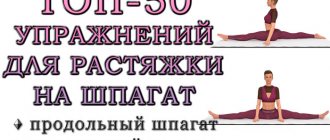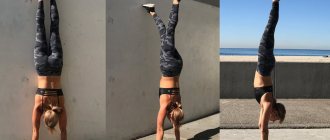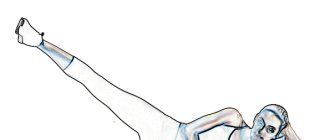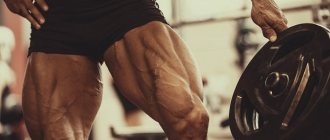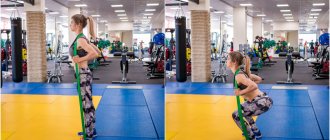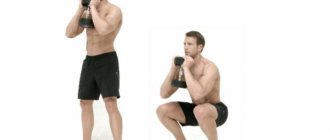Sirsasana is the queen of asanas. The asana is named so for a reason. There is an opinion that performing an asana combines the effect of performing all other asanas that exist in yoga. The headstand in yoga is considered one of the most difficult and traumatic asanas, however, if consistently mastered and performed correctly, it will only bring benefits. However, there are still contraindications for performing the asana. It is not recommended to perform a headstand for people suffering from hypertension, problems with the heart and cardiovascular system, severe forms of vegetative-vascular dystonia, since such ailments can worsen during the performance of the asana and lead to dire consequences, including stroke and brain disorders brain. However, don't despair. The health problems described above can be solved with the help of other, less complex asanas, after which you can begin to perform a headstand. Everything has its time.
It is also worth noting that headstand in yoga requires developed muscles of certain parts of the body and you should take into account your physical capabilities. If the muscles of the neck, arms and shoulder girdle are underdeveloped, it will be impossible to hold the asana for a long time and correctly. Before you begin performing a headstand, you should strengthen your muscles with the help of other asanas, and over time, begin to master the headstand.
Benefits of headstand
A headstand has great benefits not only for the spine, but also for the body as a whole. This position is often used in yoga, but only those who have been practicing for a long time can perform it. Learning to hold a headstand means mastering most inverted asanas.
A headstand is a completely unnatural position for the human body, so at first it will experience some kind of stress. Due to this, metabolic processes will accelerate.
Blood circulation increases due to the inverted position of the body, blood flows out of the heart, it is unloaded and begins its work correctly.
If you learn to add breathing exercises to a headstand, this will have the effect of saturating the blood with oxygen. In addition, this position enhances concentration and improves memory, due to the rush of blood to the head.
One of the reasons why it is better to learn to stand on your head is to improve the flow of internal energy. A person’s chakras open up and begin to work more harmoniously.
Thanks to the inverted state of the body, skin tone improves, the skin tightens and complexion improves due to the rush of blood to the head.
Since blood flows to the brain intensively in this position, the hypothalamus begins to regulate the activity of the thyroid gland and adrenal glands, more actively than in the usual position, reproductive function improves, especially in women, due to the outflow of blood from the pelvis.
A significant benefit of the headstand is the improvement of venous outflow when the veins dilate, especially in the lower extremities. Digestion also improves and problems with bowel movements go away.
Headstand improves blood circulation, thereby promoting increased hair growth. Hair follicles receive more nutrition than usual. Thanks to this, hair begins to grow by more than 2 cm per month. In addition, dormant bulbs wake up. Therefore, the hair will become thicker.
Execution technique
- We stand at a distance of approximately 0.5 m from the wall. We throw our legs up, if necessary, resting our heels on the wall.
- We find balance in this position, fix the body and gradually begin to move forward.
- Ideally, of course, your legs should be kept vertical and level. But at first it is permissible to bend them or move them apart. The center of gravity of the body will shift and it will be easier to maintain balance.
There is another point of view that it is better not to start training against the wall. The fact is that when a person does this exercise, knowing that there is a support in the form of a wall behind him, he initially pushes off the floor more forcefully than required, because his goal is to lean against the wall, and not to catch balance in the air. When trying to stand in the center of the room, make sure that there are no objects nearby that you can hit.
If you are scared to stand on your hands right away, you can first master an exercise such as a forearm stand: in this case, the support area will be larger and the chance of falling will be less. This exercise will help you believe in yourself, and will also further strengthen your shoulders. Were you able to stand like this for ten to twenty seconds? You can move on to a straight arm stand.
Stand on your hands so that your shoulders are directly above your hands. In this position, it will be easier to find balance. Then sharply push your feet off the floor and stand in a standing position.
Be sure to practice exiting the stance correctly. If you feel like you are falling backwards, you need to turn your body to the side and jump to the side. The second option is to bend your legs and take a few steps forward with your hands, which will allow you, firstly, to shift the center of gravity, and secondly, to fall on your legs and not on your back. If you feel that the center of gravity is shifting, move your hands - this will allow you to take more steps and not fall.
The process of learning to walk in the arms of a child is, in principle, not much different. The main task of an adult is to insure him while performing exercises, do not forget about observing safety precautions, and correct grouping of the body when falling. At first, you can insure the child by holding his legs until he learns to balance himself. However, the same can be said about training an adult: having a belay person won’t hurt either.
The ability to walk on your hands will allow you not only to strengthen the muscle strength of your arms and shoulders, but also to learn how to balance in almost any position. This is also a skill that you can be proud of and that will be admired in any company! Just remember: the body has the ability to quickly learn new skills, but just as quickly it can forget them, so it is necessary to practice regularly.
Headstand technique
While performing the exercise, you should be as relaxed as possible. If you feel tension in the cervical region, or there are contraindications, then it is not recommended to start a headstand.
First, you need to take a sitting position on your knees against the wall, then place your elbows in front of you on the floor and try to maintain balance on your elbows.
If this preparation is successfully completed, you can try to transfer the weight of your body onto your fingers and touch them with the top of your head. Gradually you can begin to straighten your knees, but initially you should be grouped so that if you fail, you can quickly return to a sitting position.
At home, without using special auxiliary objects, it will be more difficult to learn to stand on your head, but it is also possible. At first, you should perform the exercise near a wall to make it easier to rest your feet on it if you have difficulty with balance. But in the future it will be possible to perform the asana anywhere, even without support.
To properly stand on your head, you need to gradually move your legs towards your head, performing a flip onto your hands. In this case, the torso should be in balance. If you lose it, you can carefully return to the starting position and try to start all over again.
At first, it will be convenient to train in a free corner of the room. Such a place will allow you to concentrate your sensations and support your body with your legs, leaning against one or the other wall. You should always take into account that you may want to fall backwards. This should be avoided at all costs to prevent injury.
When your arms are tired enough or you feel weakness and discomfort in your spine or neck, you should stop the exercise and reschedule it the next day.
Preparatory stage
Before you stand on your head, it is important to concentrate on the result. Bring yourself to a calm emotional state, get rid of negative thoughts, adjust your body to an inverted position of 180 degrees.
To avoid panic and feverish heartbeat, you need to do a headstand gradually:
- fold the yoga mat in several layers and move it close to the wall;
- get down on all fours, stretch forward, clasping your elbows with your fingers, and place them on the mat, a short distance from the support;
- Without changing the position of your elbows, clasp your hands together and lower your head close to your fingers;
- Straighten your knees and try to move closer to the wall so that your back touches it along its entire length;
- socks should point up.
Attention : the beginner’s task is to lift off the floor with your elbows so that the weight of your entire body does not fall on your neck; the weight should be distributed between each of the elbows and the lock of your palms, with which you push off from the mat.
How long should you stand on your head?
At first, to learn how to stand on your head, it will take about half an hour for the entire workout. However, you should not be too zealous so as not to get the opposite effect from the exercise.
For the headstand itself, about 20 - 30 seconds are usually enough. From just one minute those who have been practicing yoga for a long time can already stand. The time spent in this position should be increased gradually, from time to time. From the first seconds it is worth catching your condition. If you feel unwell or have other problems, you should stop performing the stance.
Physiology of Shirshasana, Sirshasana
There are many options for performing shirshasana. There are methods that allow you to achieve correct body position even for those who have recently started practicing yoga. The stance should be performed slowly and smoothly. Entering sirsasana should not be abrupt. Legs, arms and the whole body are as relaxed as possible, but maintain body weight and balance.
Sirshasana has a positive effect on the entire human body. The main position is considered to be a handstand. In this case, the body weight should be evenly distributed between the head and arms. The legs maintain balance. The arms are bent at the elbow joint, the legs are straight. Having learned to perform the asana in the corner of the room or with the support of another person, you can try to perform it yourself.
The physiology of the asana is so unusual for humans that it is unlikely that it will be possible to achieve its correct execution the first time. But there are special techniques that make it easier to enter a position.
Signs of mastering the asana
In order to quickly learn how to perform a headstand, you should start with simple inverted asanas so that the body and the body as a whole get used to this position.
When a person has learned to stand on his head, he will feel relief when his body is in an inverted state, he will be able to maintain his balance without any particular problems, and stay in this state for a large amount of time.
If a person does not feel the load on the spine, his body is relaxed, he stands on his head easily, then he has mastered this practice.
Choosing an instructor and school
This is a tough question, but a few small observations.
I would recommend looking at how the instructor positions himself. He has a website or you can see his photo on the school (club) website.
Now, if in this photo he is doing something difficult similar to the photo above, run away from him like hell. He doesn't understand what he is doing and why.
A normal instructor will position himself in a meditative asana or simply without any asana.
Any yoga should be meditative. Not necessarily slow and smooth, options are always possible (for example, Yogananda taught the Yogoda system - strong static stress). Meditative in the sense of the purpose and criterion of practice.
Yes, yoga is essentially meditation. Just like qigong, which is dynamic meditation.
And as a rule, it is better if the yoga instructor is over 40. Or over 50 ((of course, there are exceptions). Still, yoga is not a sport.
With age we become wiser (albeit a little, but still). We gain life experience. And it becomes clearer to us that:
Is there any harm
It must be remembered that the headstand has its own characteristics. During the inverted position, blood flows to the head and brain, so people suffering from diseases of the nervous system should not start this practice.
Blood pressure may increase during a headstand, so those with high blood pressure should be careful. For some time during the inverted asana, a state of deafness may appear. It gradually passes. This occurs due to increased blood flow.
If you have any ailments, you must consult with a specialist so that he agrees to master the technique on the head. It must be remembered that during menstruation it is better to refrain from inverted asanas.
Contraindications and precautions
The headstand, in addition to many advantages, has contraindications. They should be followed carefully so as not to harm your body. These include high blood pressure, diseases of the cardiovascular system, diseases of the spine, including hernias, conditions after heart attacks and strokes, as well as colds and high fever.
If you adhere to some rules, standing on your head will only benefit the performer and will not harm your health.
The first few times it is better to perform the stand with a professional instructor, so that he can correct the technique of performing the exercise. The stand carries quite a serious load on the body, so it is important to follow simple recommendations. This exercise should not be performed by pregnant women. This position carries enormous risks for the development and health of the fetus. Even in the early stages, execution is prohibited.
Useful tips
When learning a headstand, it is important to adhere to the following recommendations:
- Take the first steps only under the supervision of an instructor;
- After completing the asana, there should be no pain or discomfort in the cervical area.
- Before lifting your legs off the surface, place your arms at a 90-degree angle.
- When pushing off the surface, do not allow the upper limbs to diverge to the sides.
- For safety, it is better to learn the asana in the corner of the room.
- Don’t try to lean against the wall so as not to get used to it.
- Keep your feet together to maintain balance.
- If the asana is being performed in the middle of the hall and you feel a loss of balance, quickly regroup by unclasping your intertwined fingers.
- Breathe through your nose.
- Body weight is concentrated on the palms and elbows, not on the head.
It is important to distribute the body weight so that a minimum part of it moves onto the head. Otherwise, you may have deformation of the joints of the cervical spine.
It is forbidden to make a fulcrum at the crown of the head (anterior fontanelle). In this place the bone is very thin and irreparable damage to the nerve plexuses and blood vessels can be caused.
When a person is in Shirshasana and feels unwell, he needs to immediately leave the asana.
Learn to stand on your head yoga exercises for advanced
To learn how to perform this asana, you should take into account some of the characteristics of your body. A weak muscle corset will not allow you to maintain balance for a sufficiently long period of time, so first you need to start strengthening your muscles.
In addition, pain in the back, for example, pain due to osteochondrosis, will hamper movement to some extent, which will become an obstacle to high-quality performance of the stance.
Not only advanced performers, but also beginners can learn to stand on their heads. Although this exercise is quite complex, once you start practicing, the result will come quite quickly.
In order to take this position, you should start performing it in a position with your knees bent, placing your hands with your palms under your head. Next, you need to gradually straighten your legs, achieving balance in each movement.
After a person learns to balance in an inverted position with his knees bent, he will be able to straighten his legs faster and faster. Over time, the implementation of this technique will become increasingly easier and it will be possible to adopt it very quickly and without any particular problems.
First, you need to use the support of another person or even a wall so that you can catch your balance with your feet in case they move to the other side. Your partner will be able to guide and hold your legs in the desired position.
Performing Shirsasana
How to do a headstand:
- Kneel down in front of the yoga mat.
- Bend forward so that your forearms are centered and your elbows are shoulder-width apart.
- Make a “cup” with your fingers and squeeze your palms tightly. Do not separate your fingers throughout the entire asana.
- Press the top of your head into the mat so that the back of your head is on your hands. Do not touch the surface with your head.
- Bring your knees closer to your head.
- Inhale and lift your bent knees up with a small jerk.
- Maintain your balance and touch your heels to your buttocks.
- Having leveled your balance, smoothly straighten your legs so that your torso is perpendicular to the floor.
- Stay in the position for a comfortable duration from 5 seconds to 5 minutes, depending on your endurance. Breathe through your nasal passages.
- Gently and gradually return to the starting position.
Precautions while performing sirsasana
It is necessary to avoid gross mistakes during the period of practicing asana, so as not to cause yourself considerable harm instead of benefit.
Firstly, you need to pay attention to the neck so that there is no inconvenience or heavy load. The mass of the torso is supported by the arms and shoulders. The elbows should not spread wide or move narrowly, because then an even greater load will be created and the equilibrium point in the asana will be lost. It is necessary to exit and enter Shirshasana without jerking, as unnecessary movements will lead to bad consequences. The exit should be slow, there is no need to fall like a bag to the ground. When this happens, it means that the muscles are still quite weak and do not allow the legs to be slowly raised and lowered, so the muscles must first be strengthened with other asanas.
Benefits of headstand
There are ultimately many benefits to be found in a headstand.
It can rejuvenate, strengthen the body, and stimulate the pineal gland and thyroid gland.
- With its help, melatonin is produced, blood flows to the head from the legs, and this will ensure good vision, prevent the appearance of gray hair, relieve fatigue, and improve the condition if there are varicose veins.
- The heart actually rests.
- Keeping your torso in an inverted position helps you concentrate on meditation and will increase the level of work of meditative practices.
- The muscles of the upper body develop.
- Blood circulation to the brain improves due to a rush of blood.
- The digestive organs are cleansed.
- Wrinkles can be smoothed out if practiced regularly.
- The energy of the lower chakras rises to the upper ones - at the energy level, the harmonious development of a person’s personality occurs.
Shirsasana for beginners
Shirshasana is not suitable for those people who have just started practicing yoga. First of all, you need to master simpler poses in order to understand the principles of their implementation. To prepare, experienced yogis recommend doing Halasana, and then proceeding to Sarvangasana. If you can maintain balance in an inverted pose, then you can try Shirshasana.
At first, it is recommended to use a wall as a support to reduce the risk of injury from falling. After mastering the asana at this stage, proceed to the full version. In Shirshasana, the body weight is distributed on the elbows and shoulders, the head touches the floor at one point.
Some people have difficulty getting into the pose because they cannot lift their legs upright. Then do this:
- lift your legs off the surface and lift them up with your knees bent, straighten them after a certain time;
- when you can’t level the balance, lift one leg, then the other leg;
- if lifting your legs separately is also difficult, then strengthen the spinal muscles with the help of other asanas;
- If you experience discomfort, dizziness or fever, exit Shirshasana.
The mass is supported by the elbows and shoulder joints, and not by the head, if the name is interpreted literally.
- The head touches the ground at a distance of about forty to fifty millimeters from the place where the hair grows.
- We place our palms on the elbows - this distance will be the distance between the elbows necessary to maintain the stance.
- Then we kneel next to the wall with our elbows in the correct position.
- We clasp our hands in a lock and place the back of the head there with the head in contact with the ground.
- Then we straighten our legs to create an acute angle between the body and legs.
- We raise our legs up, without fear of falling back, because the wall behind us, no matter what, supports us.
- If you fall forward, you don't have to worry anyway, because your instincts will help you and you will straighten your legs.
- After raising our legs up, we find the balance point with balance, without straining and without fear of anything.
